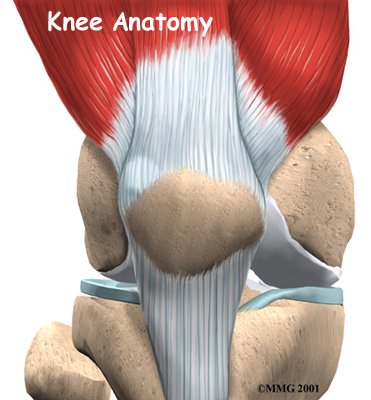Greetings

Happy New Year from all of us at Iron City Physical Therapy.
You may have made some resolutions for this year. One of the most important resolutions you can make is to improve your health. If you are suffering from chronic pain and are not sure about what type of treatment may give you relief, consider contacting one of our highly-skilled physical therapists today.
Our trained professionals can provide you with advice regarding physical therapy methods that have proven to be successful in treating a variety of conditions. Our physiotherapists would be happy to assess your current condition and create a program tailored specifically to your needs and goals. Call Iron City Physical Therapy to make an appointment or to ask any questions you may have.
This edition of our newsletter is focussed on Knee Injuries.
 The knee is one of the most commonly injured joints in the body: emergency rooms report over 2 million cases of knee injuries annually. Non-surgical treatment, in the form of physical therapy, is one of the first steps to managing a knee injury. If successful, physical therapy can quickly relieve the pain associated with the injury, accelerate the healing process, reduce scar tissue, and improve mobility.
The knee is one of the most commonly injured joints in the body: emergency rooms report over 2 million cases of knee injuries annually. Non-surgical treatment, in the form of physical therapy, is one of the first steps to managing a knee injury. If successful, physical therapy can quickly relieve the pain associated with the injury, accelerate the healing process, reduce scar tissue, and improve mobility.
There are numerous forms of physical therapy, from aquatic exercise to aerobic exercise, manual therapy and soft tissue massage, and even electrical stimulation. The type of physical therapy that will work best for a knee injury depends on the type of injury. Therapeutic massage, strengthening exercises, and aerobic exercise have been shown to significantly reduce the occurrence of long-term pain after a knee injury. Furthermore, a combination of physical therapy methods such as aerobic exercise and strength training, together with attending sessions consistently, is associated with a better therapeutic outcome.
In other words, adhering to your physical therapy program will lower your risk of experiencing long-term complications, re-injury, or decreased quality of life. Interestingly, physical therapy program adherence often leads to quicker reductions in pain as well as improvement of joint mobility, versus simply increasing the intensity of therapeutic exercises. This means that even if you start feeling better after a few physical therapy sessions, your long-term benefits will greatly increase if you make the effort to complete all recommended sessions.
An important point to remember is that even when the knee pain is gone, the joint may not have fully healed. Muscles and ligaments at the injury site may still be weak and returning to normal activities too soon can lead to re-injury. Here are a few tips your physical therapist may recommend to help prevent re-injury and the need for further medical intervention.
- Take knee injuries seriously - even those that seem minor – and seek medical attention if knee pain becomes persistent or is accompanied by swelling.
- Try to complete your recommended physical therapy program in its entirety, and attend all follow-up visits to maximize your improvement.
- Follow any instructions from your physical therapist closely, such as not returning to normal daily activities at the first sign of improvement.
- Engage in physical activity carefully and try to avoid rigorous exercise until your physical therapist has provided you with clearance.
For more information on how physical therapy can benefit you, talk to the trained, licensed physical therapists at Iron City Physical Therapy. One of our physical therapists would be happy to assess your knee injury and create a program tailored specifically to your needs and goals. Call Iron City Physical Therapy to make an appointment or to ask any questions you may have.
Be sure to visit our online resource for Knee pain and conditions.
References
Gabe BE, Mcllvain NM, Collins CL, Fields SK, Comstock RD. Epidemiology of 6.6 million knee injuries presenting to United States emergency departments from 1999 through 2008. Academic Emergency Medicine. 2012; 19(4):378-85.
Czamara, A., et al., The effect of physiotherapy on knee joint extensor and flexor muscle strength after anterior cruciate ligament reconstruction using hamstring tendon. Med Sci Monit, 2011. 17(1): p. 35-41.
Kim, E., et al., Aquatic versus land-based exercises as early functional rehabilitation for elite athletes with acute lower extremity ligament injury: a pilot study. PM R, 2010. 2(8): p. 703-12.
Olivier, N., et al., The effect of a one-leg cycling aerobic training program during the rehabilitation period in soccer players with anterior cruciate ligament reconstruction. Clin J Sport Med, 2010. 20(1): p. 28-33.
Dworak, L.B., et al., [Analysis of knee joint injuries of competitive volleyball players in selected sports clubs of Poznan city--biomechanical context. Synthesis--proposal for the usage of physiotherapy methods in the prevention of the discussed injuries]. Chir Narzadow Ruchu Ortop Pol, 2010. 75(1): p. 35-41.
Vance, C.G., et al., Effects of transcutaneous electrical nerve stimulation on pain, pain sensitivity, and function in people with knee osteoarthritis: a randomized controlled trial. Phys Ther, 2012. 92(7): p. 898-910..
Hagglund, M., et al., Superior compliance with a neuromuscular training programme is associated with fewer ACL injuries and fewer acute knee injuries in female adolescent football players: secondary analysis of an RCT. Br J Sports Med, 2013.